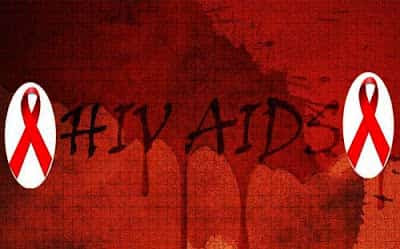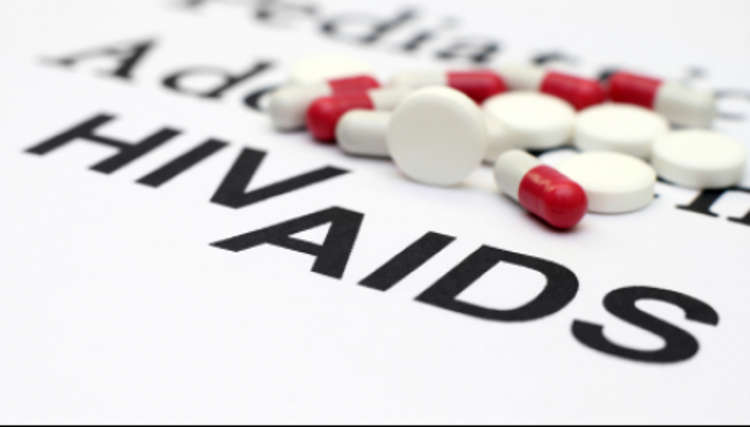What is HIV?
HIV is a virus that damages the immune system. The immune system helps the body fight off infections. Untreated HIV infects and kills CD4 cells, which are a type of immune cell called T cells. Over time, as HIV kills more CD4 cells, the body is more likely to get various types of infections and cancers. HIV is transmitted through bodily fluids that includes blood, semen, vaginal and rectal fluids, breast milk. The virus doesn’t spread in air or water, or through casual contact. HIV is a lifelong condition and currently there is no cure, although many scientists are working to find one. However, with medical care, including treatment called antiretroviral therapy, it’s possible to manage HIV and live with the virus for many years.
Without treatment, a person with HIV is likely to develop a serious condition called AIDS. At that point, the immune system is too weak to fight off other diseases and infections. Untreated, life expectancy with AIDS is about three years. With antiretroviral therapy, HIV can be well-controlled and life expectancy can be nearly the same as someone who has not contracted HIV. It’s estimated that 1.1 million Americans are currently living with HIV. Of those people, 1 in 5 don’t know they have the virus. HIV can cause changes throughout the body. In this artcile you will learn the effects of HIV on the different systems in the body.
What is AIDS?
AIDS is a disease that can develop in people with HIV. It’s the most advanced stage of HIV. But just because a person has HIV doesn’t mean they’ll develop AIDS. HIV kills CD4 cells. Healthy adults generally have a CD4 count of 500 to 1,500 per cubic millimeter. A person with HIV whose CD4 count falls below 200 per cubic millimeter will be diagnosed with AIDS. A person can also be diagnosed with AIDS if they have HIV and develop an opportunistic infection or cancer that’s rare in people who don’t have HIV. An opportunistic infection, such as pneumonia, is one that takes advantage of a unique situation, such as HIV. Untreated, HIV can progress to AIDS within a decade. There’s no cure for AIDS, and without treatment, life expectancy after diagnosis is about three years. This may be shorter if the person develops a severe opportunistic illness. However, treatment with antiretroviral drugs can prevent AIDS from developing. If AIDS does develop, it means that the immune system is severely compromised. It’s weakened to the point where it can no longer fight off most diseases and infections. That makes the person vulnerable to a wide range of illnesses, including:
pneumonia
tuberculosis
oral thrush, a fungal infection in the mouth or throat
cytomegalovirus (CMV), a type of herpes virus
cryptococcal meningitis, a fungal infection in the brain
toxoplasmosis, a brain infection caused by a parasite
cryptosporidiosis, an infection caused by an intestinal parasite
cancer, including Kaposi’s sarcoma (KS) and lymphoma
The shortened life expectancy linked with untreated AIDS isn’t a direct result of the syndrome itself. Rather, it’s a result of the diseases and complications that arise from having an immune system weakened by AIDS. Learn more about possible complications that can arise from HIV and AIDS.
HIV and AIDS: What’s the connection?
To develop AIDS, a person has to have contracted HIV. But having HIV doesn’t necessarily mean that someone will develop AIDS.
Cases of HIV progress through three stages:
stage 1: acute stage, the first few weeks after transmission
stage 2: clinical latency, or chronic stage
stage 3: AIDS
As HIV lowers the CD4 cell count, the immune system weakens. A typical adult’s CD4 count is 500 to 1,500 per cubic millimeter. A person with a count below 200 is considered to have AIDS.
How quickly a case of HIV progresses through the chronic stage varies significantly from person to person. Without treatment, it can last up to a decade before advancing to AIDS. With treatment, it can last indefinitely. There is no cure for HIV, but it can be controlled. People with HIV often have a near-normal lifespan with early treatment with antiretroviral therapy. Along those same lines, there’s technically no cure for AIDS. However, treatment can increase a person’s CD4 count to the point where they’re considered to no longer have AIDS. (This point is a count of 200 or higher.) Also, treatment can typically help manage opportunistic infections.
HIV and AIDS are related, but they’re not the same thing. Learn more about the difference between HIV and AIDS.
HIV transmission: Know the facts
Anyone can contract HIV. The virus is transmitted in bodily fluids that include:
Blood
Semen
Vaginal and rectal fluids
Breast milk
Some of the ways HIV is spread from person to person include:
Through vaginal or anal sex — the most common route of transmission, especially among men who have sex with men
by sharing needles, syringes, and other items for injection drug use
by sharing tattoo equipment without sterilizing it between uses
during pregnancy, labor, or delivery from a woman to her baby
during breastfeeding
through “pre-mastication,” or chewing a baby’s food before feeding it to them
through exposure to the blood of someone living with HIV, such as through a needle stick
The virus can also be transmitted through a blood transfusion or organ and tissue transplant. However, rigorous testing for HIV among blood, organ, and tissue donors ensures that this is very rare in the United States.
It’s theoretically possible, but considered extremely rare, for HIV to spread through:
oral sex (only if there are bleeding gums or open sores in the person’s mouth)
being bitten by a person with HIV (only if the saliva is bloody or there are open sores in the person’s mouth)
contact between broken skin, wounds, or mucous membranes and the blood of someone living with HIV
HIV does NOT spread through:
skin-to-skin contact
hugging, shaking hands, or kissing
air or water
sharing food or drinks, including drinking fountains
saliva, tears, or sweat (unless mixed with the blood of a person with HIV)
sharing a toilet, towels, or bedding
mosquitoes or other insects
It’s important to note that if a person with HIV is being treated and has a persistently undetectable viral load, it’s virtually impossible to transmit the virus to another person.
Causes of HIV
HIV is a variation of a virus that infects African chimpanzees. Scientists suspect the simian immunodeficiency virus (SIV) jumped from chimps to humans when people consumed infected chimpanzee meat. Once inside the human population, the virus mutated into what we now know as HIV. This likely occurred as long ago as the 1920s.
HIV spread from person to person throughout Africa over the course of several decades. Eventually, the virus migrated to other parts of the world. Scientists first discovered HIV in a human blood sample in 1959.
It’s thought that HIV has existed in the United States since the 1970s, but it didn’t start to hit public consciousness until the 1980s. Learn more about the history of HIV and AIDS in the United States.
Causes of AIDS
AIDS is caused by HIV. A person can’t get AIDS if they haven’t contracted HIV.
Healthy individuals have a CD4 count of 500 to 1,500 per cubic millimeter. Without treatment, HIV continues to multiply and destroy CD4 cells. If a person’s CD4 count falls below 200, they have AIDS.
Also, if someone with HIV develops an opportunistic infection associated with HIV, they can still be diagnosed with AIDS, even if their CD4 count is above 200.
What tests are used to diagnose HIV?
Several different tests can be used to diagnose HIV. Healthcare providers determine which test is best for each person.
Antibody/antigen tests
Antibody/antigen tests are the most commonly used tests. They can show positive results typically within 18–45 days after someone initially contracts HIV.
These tests check the blood for antibodies and antigens. An antibody is a type of protein the body makes to fight an infection. An antigen, on the other hand, is the part of the virus that activates the immune system.
Antibody tests
These tests check the blood solely for antibodies. Between 23 and 90 days after transmission, most people will develop detectable HIV antibodies, which can be found in the blood or saliva.
These tests are done using blood tests or mouth swabs, and there’s no preparation necessary. Some tests provide results in 30 minutes or less and can be performed in a healthcare provider’s office or clinic.
Other antibody tests can be done at home:
OraQuick HIV Test. An oral swab provides results in as little as 20 minutes.
Home Access HIV-1 Test System. After the person pricks their finger, they send a blood sample to a licensed laboratory. They can remain anonymous and call for results the next business day.
If someone suspects they’ve been exposed to HIV but tested negative in a home test, they should repeat the test in three months. If they have a positive result, they should follow up with their healthcare provider to confirm.
Nucleic acid test (NAT)
This expensive test isn’t used for general screening. It’s for people who have early symptoms of HIV or have a known risk factor. This test doesn’t look for antibodies; it looks for the virus itself. It takes from 5 to 21 days for HIV to be detectable in the blood. This test is usually accompanied or confirmed by an antibody test.
Today, it’s easier than ever to get tested for HIV. Learn more about HIV home testing options.
What are the symptoms of HIV?
After the first month or so, HIV enters the clinical latency stage. This stage can last from a few years to a few decades. Some people don’t have any symptoms during this time, while others may have minimal or nonspecific symptoms. A nonspecific symptom is a symptom that doesn’t pertain to one specific disease or condition.
These nonspecific symptoms may include:
headaches and other aches and pains
swollen lymph nodes
recurrent fevers
night sweats
fatigue
nausea
vomiting
diarrhea
weight loss
skin rashes
recurrent oral or vaginal yeast infections
pneumonia
shingles
As with the early stage, HIV is still infectious during this time even without symptoms and can be transmitted to another person. However, a person won’t know they have HIV unless they get tested. If someone has these symptoms and thinks they may have been exposed to HIV, it’s important that they get tested.
HIV symptoms at this stage may come and go, or they may progress rapidly. This progression can be slowed substantially with treatment. With the consistent use of this antiretroviral therapy, chronic HIV can last for decades and will likely not develop into AIDS, if treatment was started early enough.
HIV symptoms in men: Is there a difference?
Symptoms of HIV vary from person to person, but they’re similar in men and women. These symptoms can come and go or get progressively worse.
If a person has been exposed to HIV, they may also have been exposed to other sexually transmitted infections (STIs). These include gonorrhea, chlamydia, syphilis, and trichomoniasis. Men may be more likely than women to notice symptoms of STIs such as sores on their genitals. However, men typically don’t seek medical care as often as women. Learn more about HIV symptoms in men.
HIV symptoms in women: Is there a difference?
For the most part, symptoms of HIV are similar in men and women. However, symptoms they experience overall may differ based on the different risks men and women face if they have HIV.
Both men and women with HIV are at increased risk of sexually transmitted infections (STIs). However, women may be less likely than men to notice small spots or other changes to their genitals.
The acronym for 'Acquired Immune Deficiency Syndrome' is AIDS. In fact, it must be understood that AIDS is not a singular disease, but a syndrome, or rather a set of diseases. People suffering from AIDS suffer from an immensely compromised immune system that makes them vulnerable to a number of diseases. Once infected with HIV, it may take anywhere between 5-10 years to develop AIDS.
Some of the major symptoms of AIDS are:
Lethargy and fatigue
Skin irritation
Drastic loss of weight
Loss of appetite
Bronchial ailments- which often lead to end stage tuberculosis of the lungs
Diarrhea, gastritis and dysentery
Prolonged fever
Sleeplessness and others
How is AIDS treated by Ayurveda?
Tonics, also known as ‘Rasayanas’ in Ayurveda are administered for stimulating appetite and strengthening immunity. Once enough strength is regained, an elimination technique is administered by incorporating enemas, emesis and purgation in the treatment. This process is known as ‘Sodhana’ and is carried out to eliminate toxins from the body.
Next the patient’s blood is purified with appropriate herbal medications. Apart from this, AIDS patients are advised to perform regular exercise, yoga and pranayama.
The acronym for 'Acquired Immune Deficiency Syndrome' is AIDS. In fact, it must be understood that AIDS is not a singular disease, but a syndrome, or rather a set of diseases. People suffering from AIDS suffer from an immensely compromised immune system that makes them vulnerable to a number of diseases. Once infected with HIV, it may take anywhere between 5-10 years to develop AIDS.
Some of the major symptoms of AIDS are:
Lethargy and fatigue
Skin irritation
Drastic loss of weight
Loss of appetite
Bronchial ailments- which often lead to end stage tuberculosis of the lungs
Diarrhea, gastritis and dysentery
Prolonged fever
Sleeplessness and others
How is AIDS treated by Ayurveda?
Tonics, also known as ‘Rasayanas’ in Ayurveda are administered for stimulating appetite and strengthening immunity. Once enough strength is regained, an elimination technique is administered by incorporating enemas, emesis and purgation in the treatment. This process is known as ‘Sodhana’ and is carried out to eliminate toxins from the body.
Next the patient’s blood is purified with appropriate herbal medications. Apart from this, AIDS patients are advised to perform regular exercise, yoga and pranayama.
The acronym for 'Acquired Immune Deficiency Syndrome' is AIDS. In fact, it must be understood that AIDS is not a singular disease, but a syndrome, or rather a set of diseases. People suffering from AIDS suffer from an immensely compromised immune system that makes them vulnerable to a number of diseases. Once infected with HIV, it may take anywhere between 5-10 years to develop AIDS.
Some of the major symptoms of AIDS are:
Lethargy and fatigue
Skin irritation
Drastic loss of weight
Loss of appetite
Bronchial ailments- which often lead to end stage tuberculosis of the lungs
Diarrhea, gastritis and dysentery
Prolonged fever
Sleeplessness and others
How is AIDS treated by Ayurveda?
Tonics, also known as ‘Rasayanas’ in Ayurveda are administered for stimulating appetite and strengthening immunity. Once enough strength is regained, an elimination technique is administered by incorporating enemas, emesis and purgation in the treatment. This process is known as ‘Sodhana’ and is carried out to eliminate toxins from the body.
Next the patient’s blood is purified with appropriate herbal medications. Apart from this, AIDS patients are advised to perform regular exercise, yoga and pranayama.
Scientists have developed a vaginal implant that can protect women from HIV infection by decreasing the number of cells that the virus can target in their genital tract.
Unlike conventional methods of HIV prevention, such as condoms or anti-HIV drugs, the implant takes advantage of some people's natural immunity to the virus, according to researchers at the University of Waterloo in Canada.
The implant, described in the Journal of Controlled Release, is composed of a hollow tube and two pliable arms to hold it in place.
It contains hydroxychloroquine (HCQ) which is disseminated slowly through the porous material of the tube and absorbed by the walls of the vaginal tract.
"We know that some drugs taken orally never make it to the vaginal tract, so this implant could provide a more reliable way to encourage T cells not to respond to infection and therefore more reliably and cheaply prevent transmission," said Emmanuel Ho, a professor at the University of Waterloo.
"What we do not know yet is if this can be a stand-alone option for preventing HIV transmission or if it might be best used in conjunction with other prevention strategies," said Ho.
HIV infects the body by corrupting T cells that are mobilised by the immune system when the virus enters a person's body.
When the T cells stay resting and do not attempt to fight the virus they are not infected and the HIV virus is not transmitted between people. When the T cells stay resting, it is referred to as being immune quiescent.
The implants were tested in an animal model and the team observed a significant reduction in T cell activation, meaning that the vaginal tract was demonstrating an immune quiescent state.
The new implant was inspired by previous research involving sex workers in Kenya.
In Kenya, Ho and research partner Keith Fowke of the University of Manitoba, observed that many of these women who had sex with HIV positive clients but did not contract the virus.
They later found the women possessed T cells that were naturally immune quiescent.
"Observing this, we asked ourselves if it was possible to pharmacologically induce immune quiescence with medication that was better assured of reaching the point of infection," said Ho.
"By delivering the medication exactly where it is needed, we hoped to increase the chances of inducing immune quiescence," he said.













